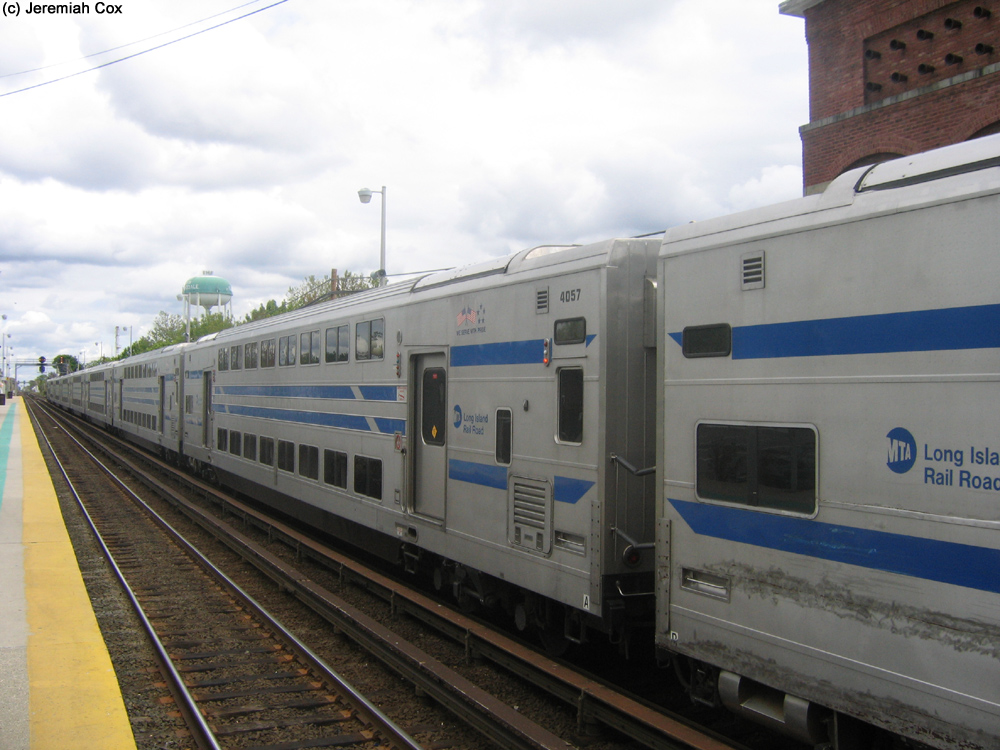I think a Superliner III would be a great idea, if the lessons learned from I and II are applied. You would need to get imput from passengers and crew members on likes / dislikes / could be better / don't need this / do need that before you start. Put 125 mph or better trucks under them. By for increases in routes and multiple trains per route.
Is the cost difference between 125mph trucks and 110mph trucks significant? Are the Superliner I/II trucks 110 MPH to match what I seem to recall the P42s are? And do the high centers of gravity of those cars have any impact on maximum speed?
http://en.wikipedia.org/wiki/Rail_trackshttp://en.wikipedia.org/wiki/Rail_tracks[/ul] lists a formula for maximum speed around curves. If I did the math right, I think that's saying that a 90 degree turn at 200 mph with the 4" superelevaction that can be allowed with a waiver would need to be over 6 miles long, and would have a radius of over four miles. At 100 mph, I think the radius gets down to just over a mile, with a track length for a 90 degree turn of a bit more than a mile and a half.
I'd love for someone to tell me that I did the math wrong, but I think that's basically saying that going at full speed around curves is basically impossible given real world land availability, unless you were building a new railroad in an unpopulated area, and it's hard to economically justify building railroads where there are no people, unless perhaps the goal is to connect two areas that are well populated. Or perhaps new tunnel could have extremely gentle curves. There might be an argument for reserving rights of ways for railroads in areas that are not yet populated, though.
This also seems to be saying that the Acela Express trainsets can't go around a particular curve any faster than the Regionals, at least as far as the FRA is concerned, and that tilting trains probably give a more comfortable ride but not a faster one.
The FRA Class 8 track standard also happens to be 160 MPH and not 150, it looks like. But if you round the Boston to DC distance off to 450 miles to make the math easy, and ignore all the curves, speed restrictions, stops in the middle to let passengers on and off, waiting behind other trains, acceleration/decelleration times, etc etc etc, Boston to DC at 150 MPH would be 3 hours; at 200 MPH, 2 hours and 15 minutes. 45 minutes may not be a big enough difference to be worth bothering with, when there are areas outside the Northeast Corridor that could be upgraded.
New York Penn Station to DC is 226 miles. The difference between doing that whole trip at 135 MPH and doing that whole trip at 150 MPH (again, pretending there are no speed restrictions at all, etc etc etc) would be about ten minutes if I did that math right (about 100 minutes at 135 MPH, or about 90 minutes at 150 MPH) 200 MPH would get the trip down at about 68 minutes, which almost seems like a big enough improvement over 135 MPH that it might be worth doing if it were actually practical.
Train 2105, which stops only at NYP, Philadelphia, and Washington DC, is scheduled to be 2:35, or 155 minutes. I'm sure that not all of the 55 minutes caused by not being able to go 135 MPH the whole way can be eliminated, but I'm starting to suspect that finding areas with speed restrictions and maybe building tunnels might be more productive than replacing all the overhead wire to be able to do 150 MPH in the sections that are currently 135 MPH.
I'm also finding myself wondering if the construction techniques that were used for Boston's Ted Williams Tunnel would be the least impractical way to create a new right of way that can support higher speeds, burying it under the ocean floor a bit off the coast. But that's probably insanely expensive to do for hundreds of miles, and I don't know if digging up the ocean floor would be as easy as digging a channel through Boston Harbor was. Then again, I'm not sure I've seen numbers on the cost of the part of Ted Williams tunnel under the harbor, vs the cost of the tunnels under the land, and apparently the tunnel sections under the harbor went together more smoothly than the connection to the surface roads did (there were leaks initially in a part of the land tunnel).





